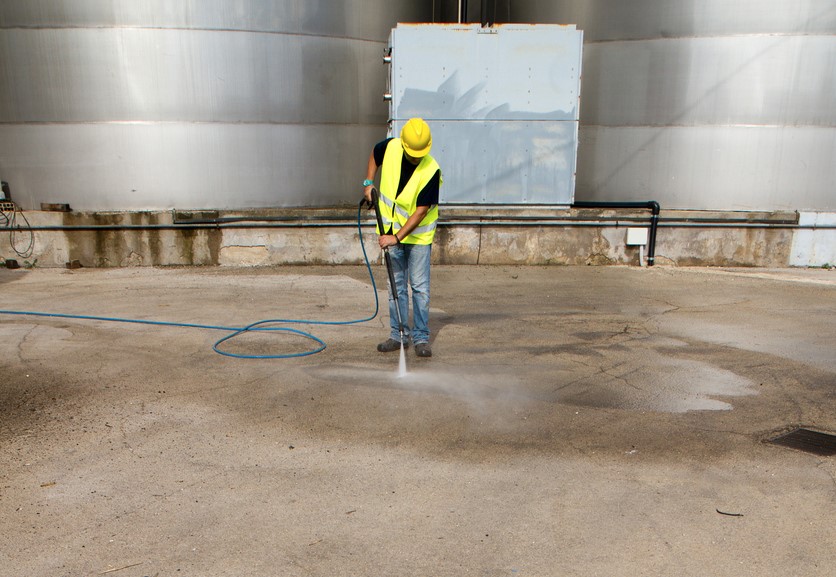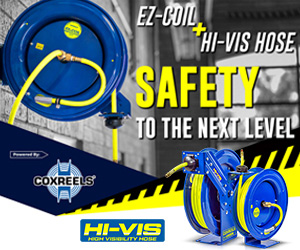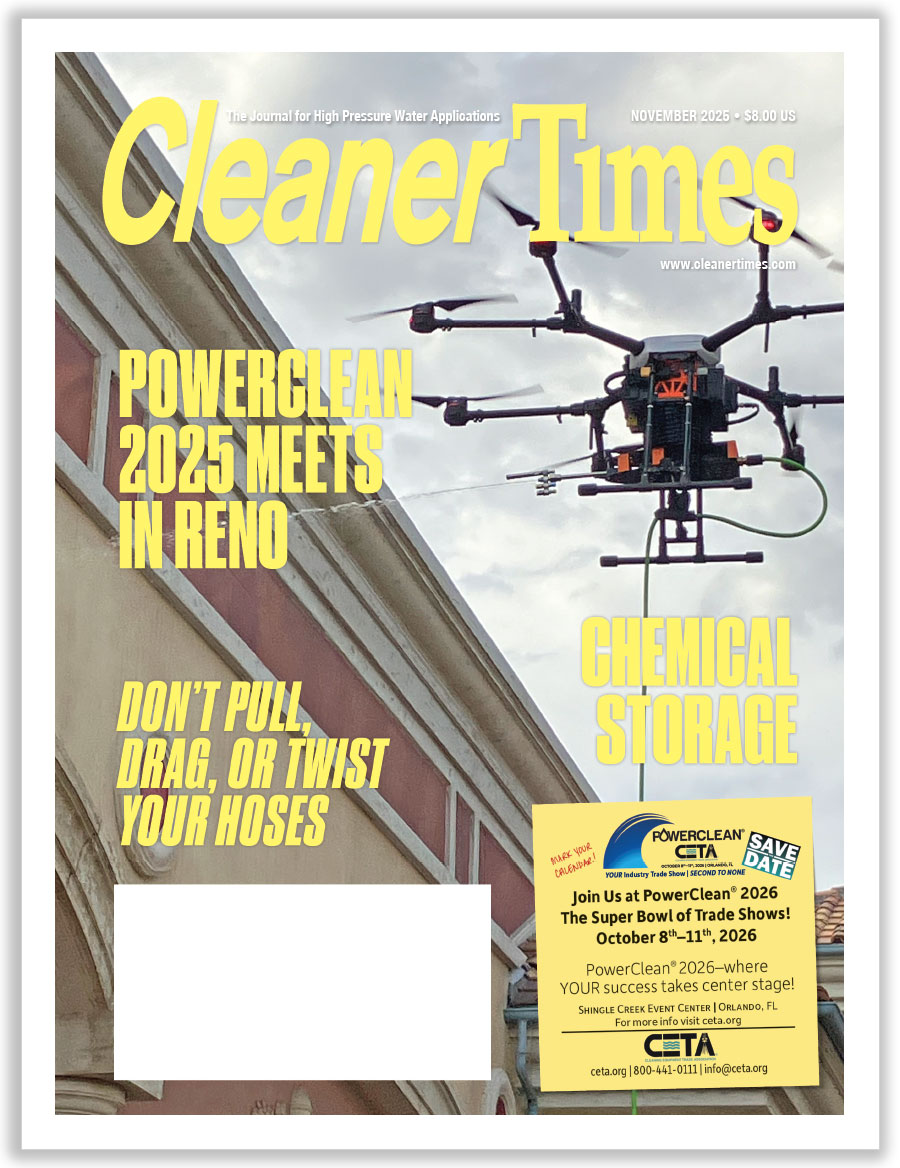
Coating Care: Erosion vs. Corrosion
Written by Jim Deardoff| Published September 2024
Editor’s Note: This article was originally published in Maintenance World and can be accessed at https://rb.gy/o0nzhr
Rust is universally accepted as the signal for coating repairs, but rust is the final stage of corrosion— a naturally occurring process that damages materials (usually metals) when exposed to the environment. Corrosion causes unplanned repairs, early replacement expense, and reduced trade-in and resale value.
Recoating based on visible rust is a form of reactive maintenance when coating failure and rust formation are the reason for repairs or replacements.
Erosion is a far more effective reason for recoating. Erosion is the wearing down of coatings due to weathering, abrasion, and chemical contact, but erosion is extremely difficult to determine by traditional inspections. The following article explains how erosion can be detected, measured, and controlled.
Maintenance based on erosion is a form of preventive maintenance where repairs are performed to prevent a more serious future failure.
CAPILLARY DEFECTS
The first sign of erosion is the creation of capillary defects. These
are microscopic cavities formed in the top layer of a coating. The size and number of these voids determine the coating’s permeability to moisture and oxygen. For new coatings the permeability may be low; but as a coating ages, the permeability increases due to exposure to the environment.
Sunlight is a major cause of capillary erosion. UV light breaks down the resin binders in coatings, leaving the pigments exposed. This process is known as photooxidation and is a major cause of coating failures.
Capillary defects create a hydrophilic surface that produces a polar attraction to moisture and oxygen. This causes dirt, grime, and carbon-based pollution to be absorbed into these voids where they are extremely hard to remove.
COLD-WATER POWER WASHING
Cold-water power washing is popular because it is affordable and simple to use. However, cold water requires high pressure (2500 to 4000 psi) and chemical detergents to remove visible dirt and grime. The problem with cold-water power washing is that it lacks the physical ability to remove complex chemicals used today.
HOT-WATER CLEANING
Hot-water cleaning provides a number of benefits over cold-water washing when the true costs of maintenance are taken into account. True costs include all labor, equipment, and supplies, plus the added value of complete and thorough cleaning.
Hot-water cleaning replaces the high pressure of cold-water washing with the thermal dynamic principals of energy where heat and temperature are used to improve cleaning performance. When water is heated, the molecules absorb this energy and collide with soils. This increases their ability to dissolve and dilute contaminants for removal.
STEAM CLEANING
Steam cleaning provides additional benefits when compared to hot water washing alone. When water is heated in the sealed container of a steam cleaner, temperatures can be increased past the normal boiling point of 212° and still not boil or produce steam. This is because it is not allowed to expand. When this water is released from the spray nozzle, it instantly expands into millions of tiny water droplets. At this point, hot water contains its highest concentration of cleaning energy.

STRATEGIC MAINTENANCE
Hot water and steam cleaning are the most effective when included in a planned maintenance schedule. A critical part of any maintenance program is a visual inspection of surfaces. Hot water/steam cleaning helps identify problems hidden by dirt, grime, grease, and oils.
pH STABILIZATION
Hot water/steam cleaning opens the door to an alternative to corrosion control by protective coatings for assets where design features, job size, and location prevent the use of traditional painting practices. This is based on pH stabilization to eliminate the conditions that cause coatings to fail rather than dealing with their long-term effects.
pH is the difference between a corrodible surface and a corrosion resistant surface. pH stabilization maintains the corrosion-prevention qualities produced at the factory and extends them throughout product life. Factory coatings are applied in a controlled environment, using quality paints and specialized application equipment. In addition, new metals and other materials will never be cleaner or in better condition when used to produce new products.
pH stabilization begins on day one after products are put into service to maintain a passive pH value. This is accomplished by maintaining a rust resistant pH value of 7.0 to 8.2.
Hot water and steam cleaning provide the optimum performance when included in a strategic maintenance schedule designed to establish and maintain a level of cleaning quality previously not available by traditional practices.
SOY-BASED PRE-CLEANER
Cleaning performance depends on the quality of its operation. For this reason a special soy-based pre-cleaner is applied before hot-water cleaning. This bio-based product provides excellent wetting properties to loosen soils from hard-to-clean surfaces.
BIOLUMINESCENCE
The soy-based pre-cleaners produce a natural bioluminescence when exposed to blacklight UV energy. Blacklight has been used for decades to identify stress cracks, fluid leaks, and other defects that are difficult to see. Blacklight increases identification of sites that require additional cleaning attention. Steam cleaning with bioluminescence is the only practical way to clean complex surfaces to the microscopic level.
NOTE: A truly cleaned surface protects paints and prevents rust.
BLACKLIGHT, UV QUALITY INSPECTIONS
One of the best UV lights for commercial applications is the “Beast.” The Beast increases the identification of cleaning defects up to 1000 percent when compared to normal human eye inspection. The Beast provides excellent results even under normal shop light.
ROOT CAUSE ANALYSIS
Steam cleaning and blacklight UV monitoring allow maintenance personnel to use root cause analysis to identify excessive wear sites and initiate design changes or modifications to improve product or overall maintenance performance. In most cases root cause analysis requires trained personnel and specialized inspection tools. Steam cleaning and blacklight UV monitoring allow the average worker to use root cause analysis.
RENEWABLE CLEAR COAT PROTECTION
The application of micro-thin nanocoating immediately after steam cleaning extends clean cycles and reduces lifecycle cleaning costs. These renewable, low cost, clear coats help prevent the buildup of dirt, grime, and chemicals by creating a surface that is smoother, easier to clean, and able to stay clean longer by coating modification at the microscopic level.
There is a definite economic argument for planned maintenance. Design engineers will continue to increase product life through improved material and parts development. For this reason current coating formulations may not be able to provide cost-effective and environmentally friendly solutions for future corrosion problems.
The argument for maintenance is simple—it takes far less resources to maintain a coating than it does to repair or replace the surface it protects.
Jim Deardorff is the president of Superior Coatings and has over 20 years in the application of protective coatings for high value equipment and steel structures. In 2000 he realized it was virtually impossible to repaint products and structures to modern standards. In his opinion, the best course of action is to protect the original factory finish by precision cleaning and renewable, thinfilm nano-coatings. Jim’s maintenance program replaces reactive repairs with higher forms of maintenance support including preventive, predictive, and prescriptive programs including root cause analysis






